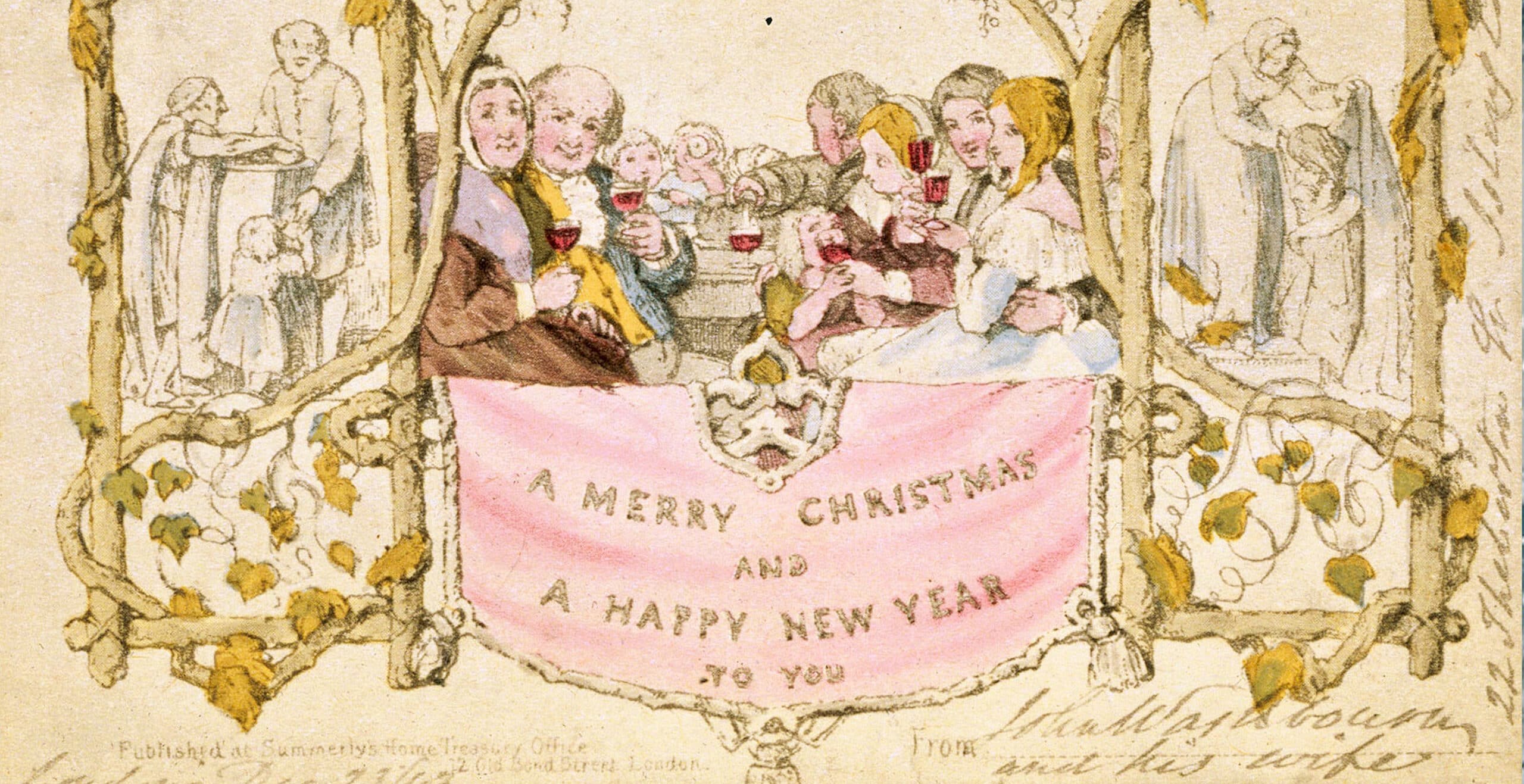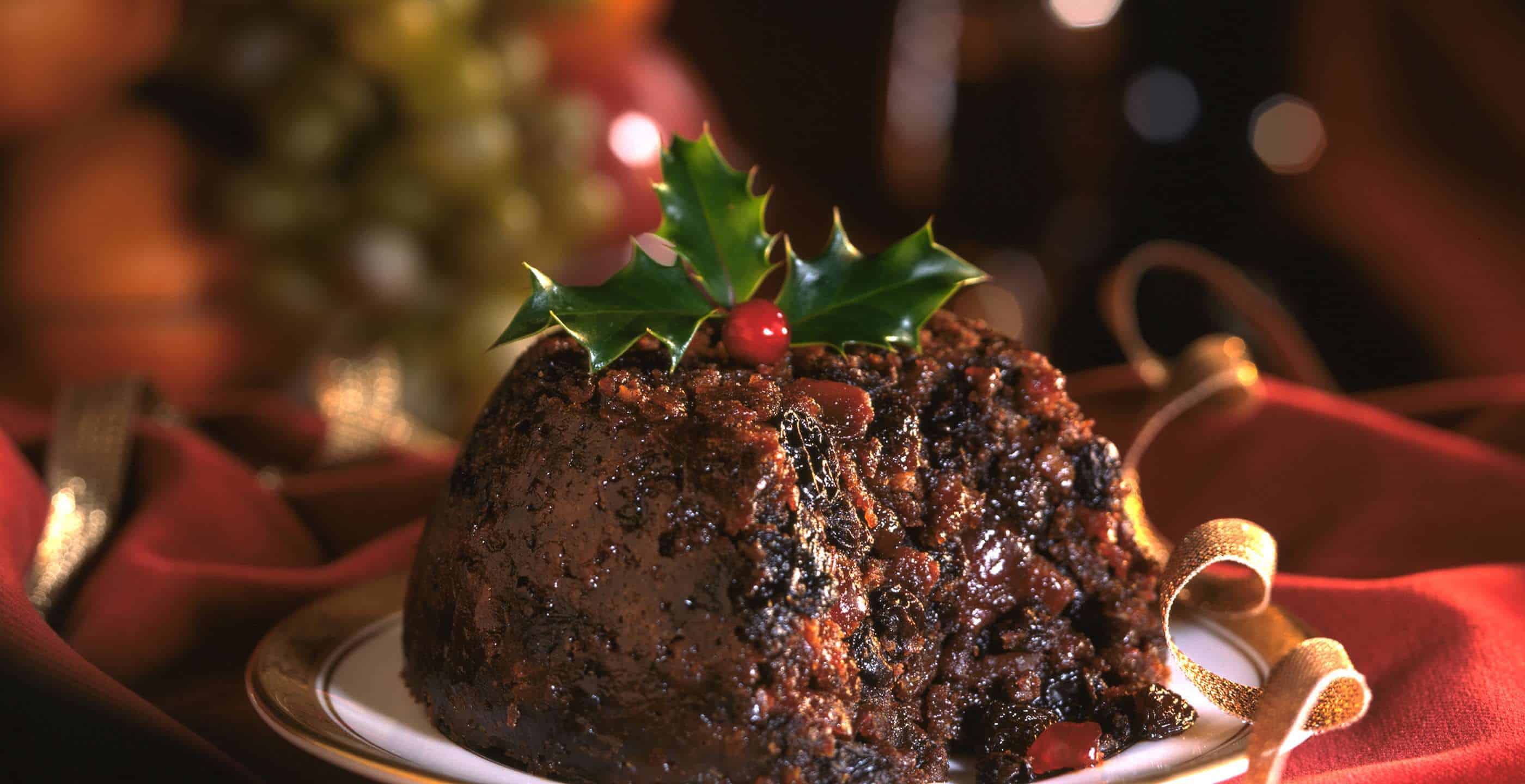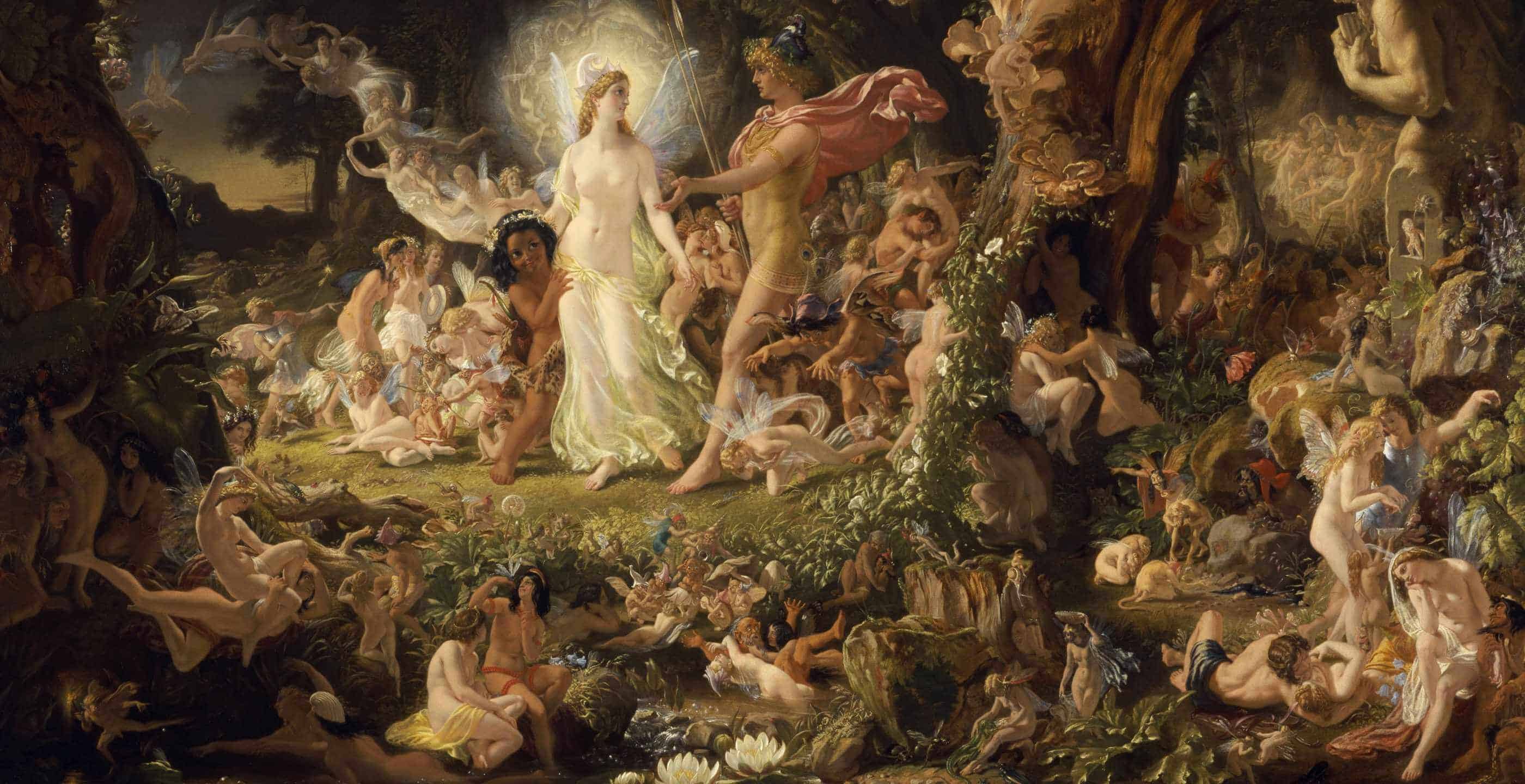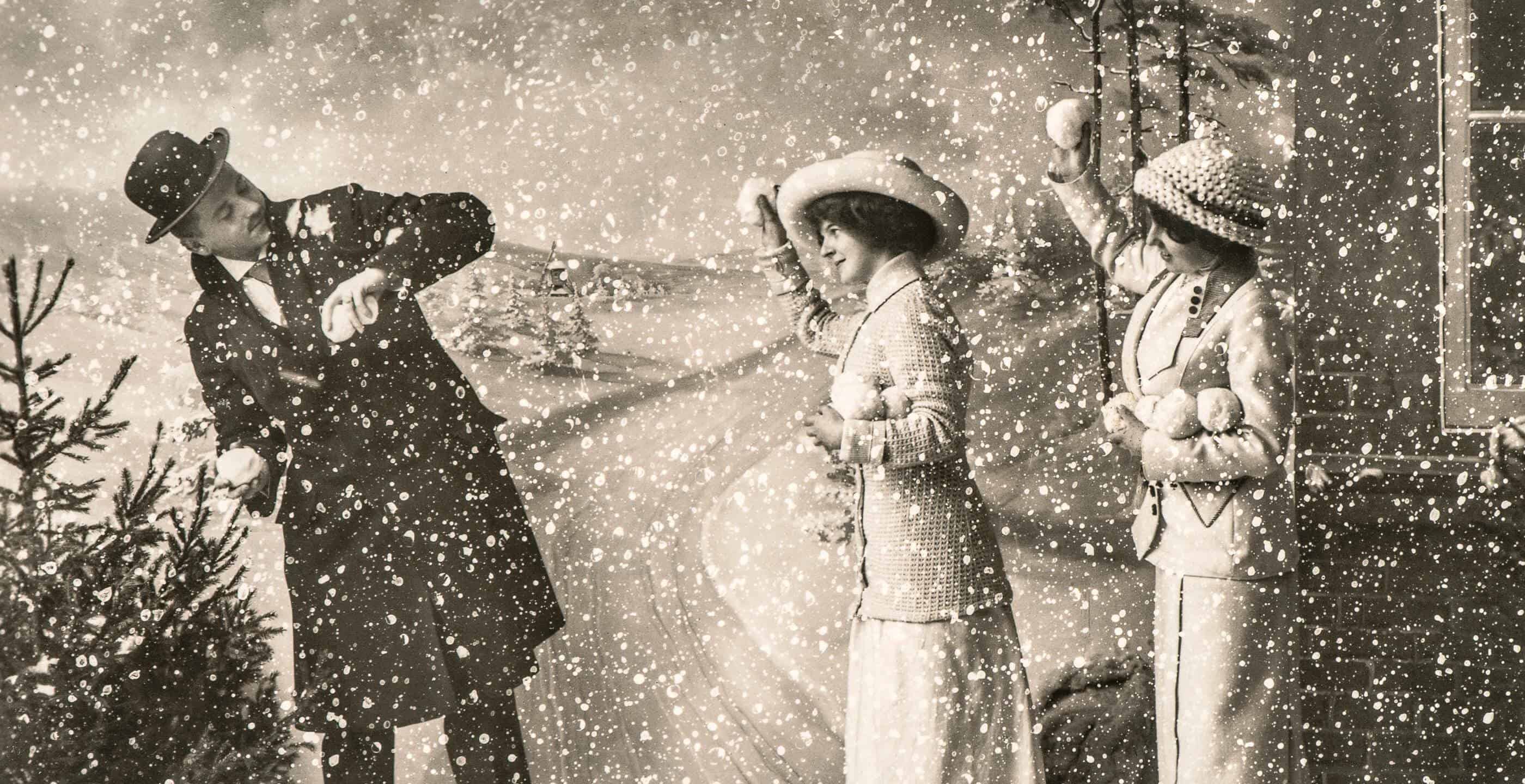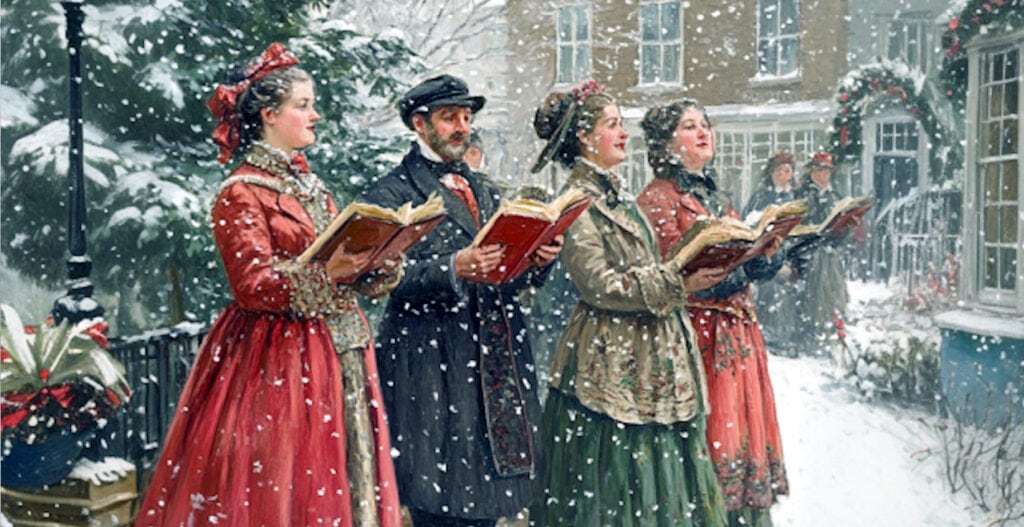Back in the winter of 1843 Henry Cole, a civil servant, watercolour artist and inventor, was faced with a mountain of pre-Christmas correspondence. It was usual for Victorians to write long letters to family and friends whom they wouldn’t be seeing at Christmas. It kept everyone up to date with recent events and plans for the future.
Henry though, was extremely busy and not looking forward to spending hours writing letters by candlelight. Instead he came up with the idea of sending a postcard sized picture of the family with a short, handwritten message from himself on the back. He commissioned his friend and fellow artist John Calcott Horsley to design and paint it. The end result was a jolly, fun Christmas card depicting the Cole family feasting at a table with drawings of charitable giving. Henry had 1000 of these cards printed and those he didn’t use, he sold for 1 shilling each in the art shop he ran.
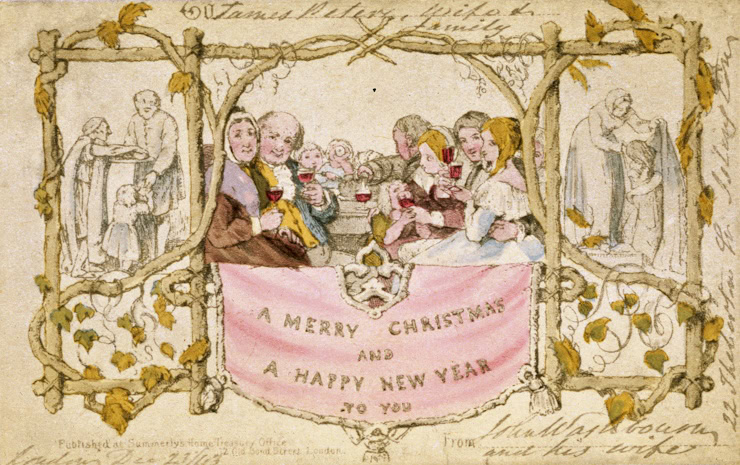
It is hard to believe that the inventive Victorians hadn’t done this before, but then Henry could now guarantee swift delivery due to a recent overhaul of the postal system, in which Henry assisted. Rowland Hill, an English teacher, social reformer and inventor, led the introduction of a pre-paid stamp called the Penny Black.
Before 1838, the recipient of the letter had to pay the postage costs, with many refusing to accept the letter. The cost had increased disproportionately due to the government using the revenue to fund its wars with France. Rowland Hill turned this around and made a pre-paid affordable adhesive stamp to be attached to the letter and it cost only one penny. The Penny Post, as it became known, provided assurance that the letter would arrive quickly and in one piece and be gratefully received. Henry was possibly looking to promote the burgeoning postal system with his 1000 Christmas cards.
Unfortunately, not many of the cards sold as only a few people could afford to buy them. Also, anyone who bought one was sending a picture of Henry and his family, albeit a humourous one. The venture was too costly to turn a profit and wasn’t repeated.
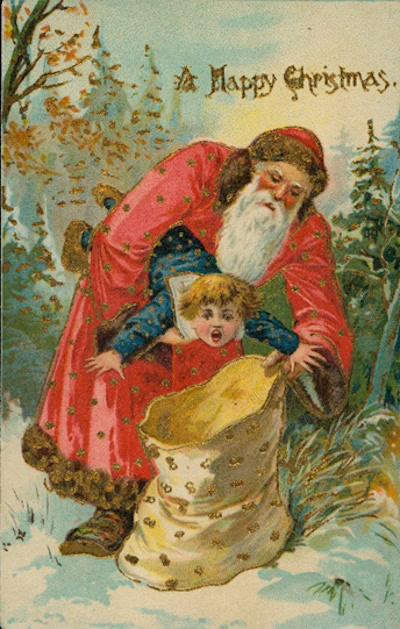
Henry was definitely ahead of his time. Christmas traditions were not quite set, and Christmas was nowhere near the commercial success it would later become. It would be another 20 years before Christmas became synonymous with carols, trees and gift giving. But gradually, more Christmas cards were designed, sold and exchanged and by the 1860s they were being prominently displayed in parlours and drawing rooms up and down the country. However, the designs were a quite a bit different to what we see today. The unknown author of the above Christmas card was reminding children to be good or they would be taken away by Santa, not given presents.
The Victorians loved novelty. They loved freak shows, circuses and pantomime so they demanded similar novelty in their Christmas cards. These then provided a topic of conversation when people dropped by the home on a short visit.
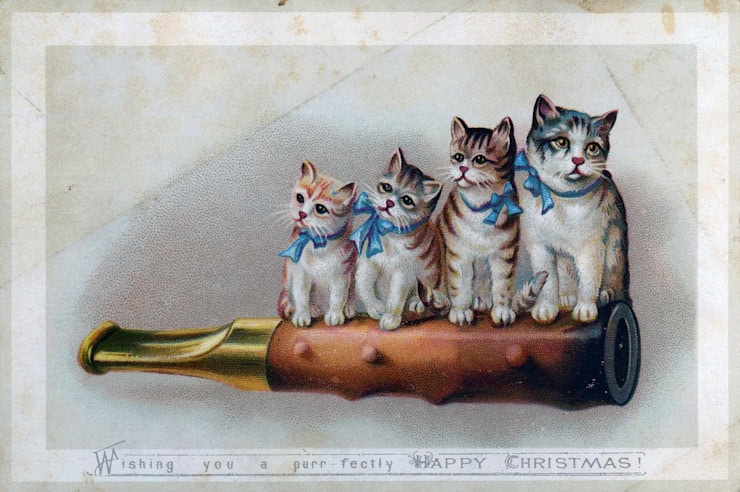
The changes in printing technology allowed the cards to be mass produced in a cheap and cheerful manner. Popular images were reprinted, which is why some of the cards do not look Christmassy at all.
But the most striking thing about Christmas cards is how few of them have anything to do with religion. The majority of the cards showed robins, holly, mistletoe, Christmas puddings, Santa, food and general festivity. If you look back at Henry’s card, a young child is gulping wine from a glass held by an adult. For the Victorians, Christmas was about rejoicing and having fun. Many cards carried snowy scenes but only a few church steeples poked through. When images of angels and Jesus did begin to appear at the end of the century, it was alongside secular images such as presents.
There were trends too. Cards featuring portraits of the family became fashionable in the 1860s and the 1870s saw a penchant for animals dressed as humans or carrying out human tasks.
As well as outlandish statements and humourous designs, Victorians liked their cards embellished with lace, fringing, buttons and feathers. Some cards even came with moving parts such as cardboard tabs to pull and reveal messages. Others folded out to reveal snow painted scenes. The Christmas card, true to its roots, was still predominantly sent to keep in touch with family and friends far away, not to spread a religious message. In 1880, 11.5 million Christmas cards were produced in the UK.

The popular Victorian time saving device has now developed into a billion-pound industry which shows no current signs of abating. Royal Mail estimates it delivers 150 million cards during the Christmas period every year in the UK. We send the most per head than any other nation, showing that exchanging Christmas cards is still a tradition close to our hearts.
The choices over the last few years have been just as topical as the Victorians too. “Silent Night – cos everything shuts at 10pm” and “We’ll remember this year as the year our bins went out more than we did” provided a giggle and a talking point during Christmas 2020, allowing people to communicate with family and friends in a more meaningful way. The all-encompassing Christmas Card – “From all of us … to all of you” is the latest trend in Christmas card exchanges, taking us in a full circle to Henry Cole’s original idea. But despite it being a time when people are watching the pennies, it seems our own time saving device – the text message – is still being usurped by the more costly and labour-intensive Christmas card. Now where did I put my pen?
Shona Parker is a history writer and blogger. Her first book “How the Victorians Lived” is published by Pen and Sword and is widely available. You can read more of her writing at www.backinthedayof.co.uk
Published: 13th December 2024.
